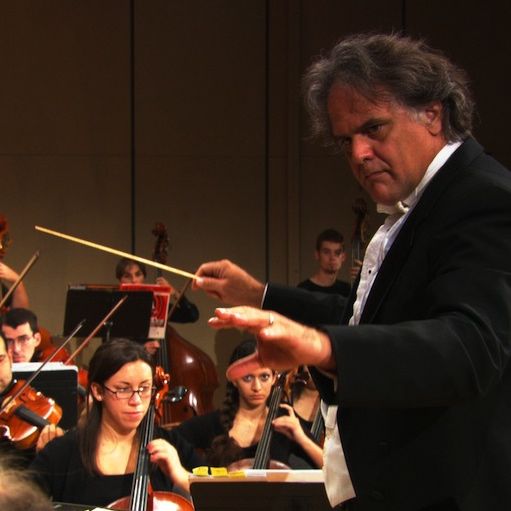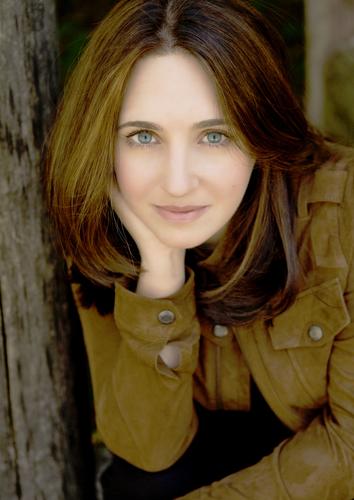Festival Miami opens with a rich American tapestry, past and present

Thomas Sleeper opened Festival Miami with a program of American music Friday night at Gusman Concert Hall.
Festival Miami, the University of Miami Frost School of Music’s annual potpourri of classical and popular musical genres, opened on Friday night with a celebration of American symphonic creativity at UM Gusman Concert Hall. A recent piano concerto, a revival of a important score by a major symphonist and an unusual work by a prolific iconoclast formed an imaginative and well-balanced program with Thomas Sleeper conducting the Frost Symphony Orchestra.
Reversing the originally order of the concert’s first half, Alan Hovhaness’ And God Created Great Whales opened the evening. Hovhaness’ large output encompassed nearly 70 symphonies plus hundreds of orchestral, vocal and chamber works. An early advocate of experimental techniques and cross culture musical influences from the Pacific Rim, Hovhaness developed a very personal brand of lyricism exemplified by the Symphony No. 2 “Mysterious Mountain,” his best known score.
Dating from 1970, And God Created Great Whales is not one of Hovhaness’ strongest works. Still, he skillfully mixes the recorded sounds of whales and extended aleatoric (or chance) music that is not fully notated, with a rich orchestral tapestry of rustling strings and braying brass. Some lovely melodies find their way into the musical stew along the way. A challenging work for orchestra players, the Frost students gave an outstanding reading of this unusual creation.
Howard Hanson was an important American composer, conductor and educator. Longtime president of the Eastman School of Music, Hanson amassed a large catalogue of instrumental and vocal works. While his style was musically conservative, Hanson’s music evidences great originality and skill with a real flair for orchestral writing.
His Symphony No. 5 (Sinfonia Sacra) is a major contribution to the American symphonic canon. The 1955 score is more complex and darkly solemn than Hanson’s once-popular Symphony No. 2 (“Romantic”). Moments of bristling energy contrast with broad, spacious thematic material. Lasting under 15 minutes, the symphony displays masterful development of melodic cells and wonderful utilization of an ensemble’s full resources. The soft conclusion is deeply expressive, one of many surprising turns in this unconventional symphony.
The indefatigable Sleeper led a superb performance, bringing thrust and unflagging momentum to the mercurial rhythmic shifts and building the big climaxes with a firm hand. The student players excelled in this score. themselves, The rock solid brass had real impact, the chorale melody was warm and evenly balanced. Throughout the score, the orchestra’s strings and winds were sonorous and strongly present. It would be difficult to imagine a stronger reading, even by a leading professional orchestra.
Along with his contemporaries William Schumann, Roy Harris, Walter Piston and David Diamond, Hanson wrote an outstanding series of symphonic scores that have unjustly fallen off the repertoire radar. (Do conductors of major American orchestras even know these works exist?) All the more credit to Sleeper for programming this fine symphony.
The concert’s second half featured Simone Dinnerstein as soloist in The Circle and the Child, a piano concerto by Philip Lasser. With a five-note C Major scale and the Bach chorale as the work’s principal melodic threads, the three movement piece is often quietly evocative, combining the colors of the instrumental choirs with the solo line and creating a mood of rapt introspection.
Although Lasser indicated in pre-performance remarks that the concerto is not a virtuosic showpiece, there are moments of pianistic display in the second movement “Chorale and Child.” The concluding section “Circles” references the style of Bach’s keyboard writing with dissonant brass interjections. Skillfully crafted, the work is immediately appealing and melodic.
The concerto was commissioned for Dinnerstein who had previously recorded a set of variations on a Bach chorale by Lasser. Although her 2013 Miami performance of Bach’s Goldberg Variations was uneven, Lasser’s concerto played to her strengths. She brought a light, sparkling touch to the opening movement, blending with the wind coloration effectively. There was power in the second movement’s big moments and sweeping urgency in the final pages. Sleeper and the orchestra offered a winning backdrop, with soft and flowing orchetsarl textures.
Festival Miami continues 4 p.m. Sunday at UM Gusman Concert Hall with a recital by violinist Charles Castleman featuring works by Bach, Spohr, David Finko, Piazzolla and Ysaye. festivalmiami.org.
Posted in Performances
Leave a Comment
Sat Oct 17, 2015
at 1:42 pm
No Comments
